Invented by Scott M. Hanson, Joseph P. Ricci, Adam J. Rivard, Jonathan C. Sell, Medtronic Inc
A distal connector assembly is a device that is used to connect medical leads to an implantable device. It is an essential component in the medical field, as it allows for the transmission of electrical signals between the implantable device and the medical leads. The assembly consists of a connector, a lead, and a locking mechanism. The connector is attached to the implantable device, while the lead is attached to the medical leads. The locking mechanism is used to secure the lead to the connector, ensuring a secure connection.
The market for distal connector assembly for medical lead extension has been growing rapidly in recent years, due to the increasing demand for implantable medical devices. The aging population, coupled with the rise in chronic diseases, has led to an increase in the number of patients requiring implantable medical devices. This has resulted in an increase in the demand for distal connector assembly, as it is an essential component in the implantation of these devices.
The market for distal connector assembly is also being driven by technological advancements. The development of new materials and manufacturing processes has led to the production of more advanced and reliable distal connector assemblies. This has resulted in an increase in the demand for these assemblies, as they offer improved performance and reliability.
The market for distal connector assembly is also being driven by the increasing adoption of minimally invasive surgical procedures. These procedures require smaller and more advanced medical devices, which in turn require more advanced distal connector assemblies. This has resulted in an increase in the demand for distal connector assembly, as they are an essential component in these procedures.
In conclusion, the market for distal connector assembly for medical lead extension is growing rapidly, and it is expected to continue to do so in the coming years. The increasing demand for implantable medical devices, coupled with technological advancements and the adoption of minimally invasive surgical procedures, is driving the growth of this market. As the medical industry continues to evolve and advance, the demand for distal connector assembly is expected to increase, making it an essential component in the medical field.
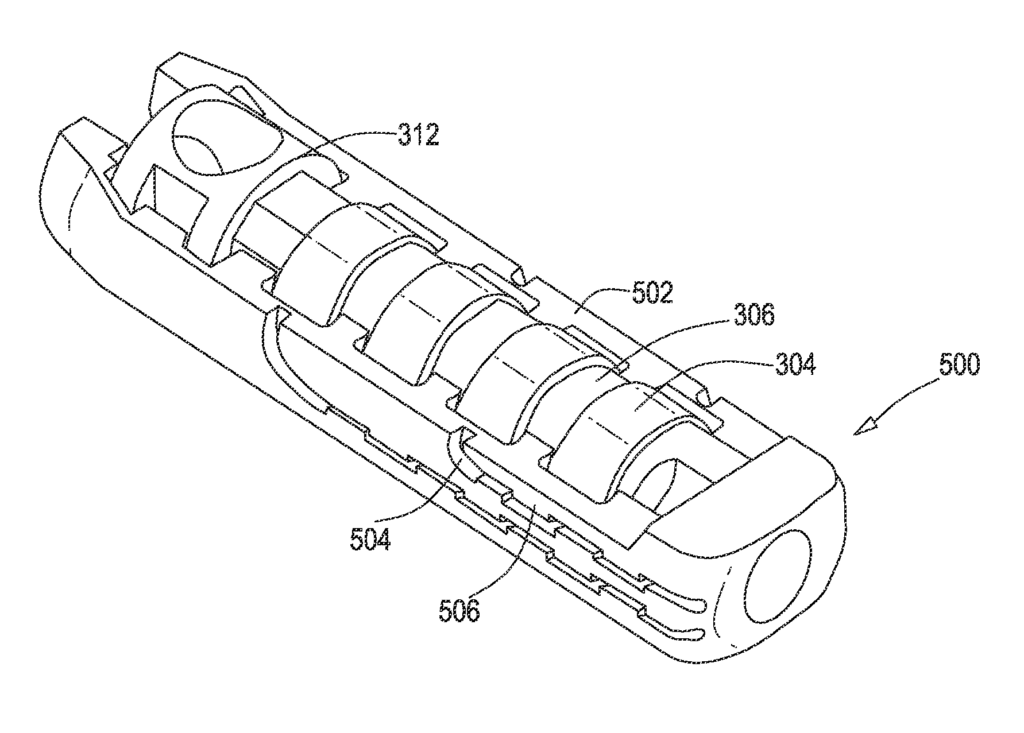
The Medtronic Inc invention works as follows
Distal connector assembly” on the distal of medical lead extension provides increased rigidity with a rigid holder containing the electrical connectors. Electrical connectors can be separated by insulative spacesrs within the rigid holders. These spacers may be separate items or they may be made from a carrier which is compliant and the electrical connectors reside inside. The rigid holder can also include a set-screw block that defines set screw bore, or it may have an integral part that defines set screw bore. The integral portion can include a slot that allows a molding pin with electrical connectors and components to be dropped in a cavity within the rigid holder. A rigid body with electrical connectors, insulative spacers, and other components may be surrounded by an overmold.
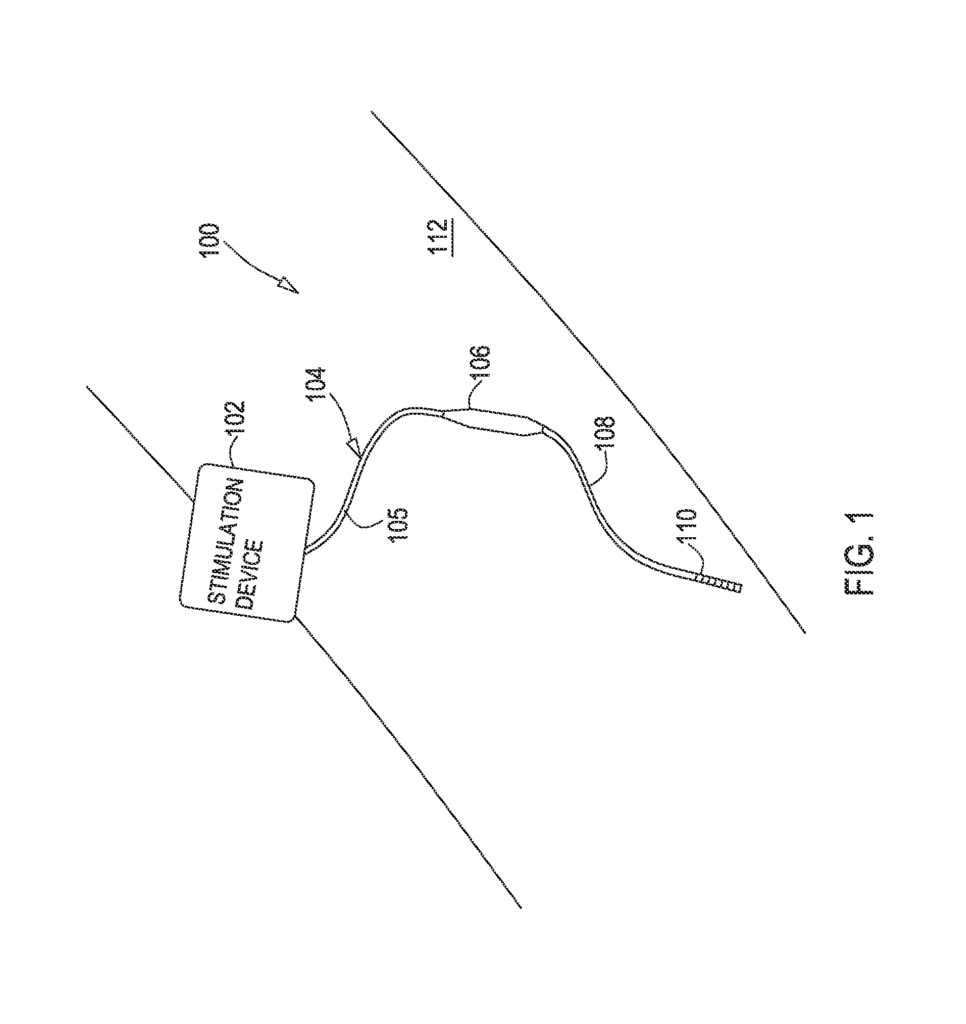
Background for Distal connector assembly for medical lead extension
Some patients may be candidates for stimulation therapies such as spinal cord stimulation or sacral nerve stimulation to treat incontinence or chronic pain. The stimulation device delivers stimulation therapy through an implantable medical led that has a distal tip at a stimulation point within the body. “It is sometimes necessary to use an implantable lead extension to span the distance between the proximal and distal ends of the implantable lead, depending on the configuration of the therapy.
For example, it might be desirable to perform a test period of stimulation. During this trial period, an external stimulator can be used to reduce the risk of infection and avoid the need for a full stimulation device implant procedure. In the event that the trial is successful then the implantable stimulator will be fully implanted in the patient. The trial system is implanted using an implantable medical led with the distal end routed to a stimulation site. The implantable lead is routed subcutaneously, from the location of proximal lead of the medical lead implanted to an exit site near the location where an external device will mount to the patient.
When connecting the proximal connector of an implantable to the distal extension connector, the proximal connector is inserted in a bore of the connector and a set screw tightened. This locks the proximal connector within the bore. Tightening the set screws tends to bend distal connectors, which could cause damage to the connector and/or the proximal lead of the implanted device. The distal connector may be bent by anatomical movements that occur after the implant. This may cause damage to the connector or the proximal end of the implanted lead, and/or result in improper electrical connectivity.
Embodiments” address these issues and others by providing a implantable medical lead extender that includes a connector assembly with a rigid holder. The rigid holder is used to hold the electrical connectors, as well as any intervening insulative spaces. The set screw block can be either seated inside the rigid holder, or it may be an integral part of the rigid hold. When a rigid holder is configured, it prevents the distal connector from bending when the set screw is tightened.
Embodiments” provide a medical extension lead that includes a long body with electrical connectors located near the proximal part of the body. The elongated body has a plurality of conductors that are electrically connected with corresponding connectors. A distal connector is attached to the elongated part and has a rigid holder with a number of bays. The rigid holder contains a plurality of electrical connectors separated by insulative spaces, with the electrical spacers positioned within the bays. The insulative spaces are aligned to the features. The conductors connect to electrical connectors in the rigid holder. An overmold is then used to surround the rigid holder as well as the spacers, electrical connectors and other features.
Embodiments” provide a medical extension lead that includes an electrical connectors located near the proximal end. The elongated housing contains a plurality of conductors that are electrically connected with corresponding connectors. The elongated part is connected to a distal connector assembly that includes a rigid holding. The rigid holder contains a plurality insulative spaces and electrical connectors. The electrical connectors are separated by the spacers. The conductors connect to electrical connectors in the rigid holder. An overmold then surrounds the rigid body and the electrical connectors.
Embodiments” provide a medical extension lead that consists of an elongated cylinder and electrical connectors located near the proximal tip. The elongated device includes a plurality of conductors that are electrically connected with electrical connectors. The elongated part is connected to a distal connector assembly that includes a rigid holder. The rigid holder contains a plurality of insulative spaces and circular electrical connectors, with the spacers separating the connectors. The conductors connect to electrical connectors in the rigid holder. An overmold is then used to surround the rigid holder as well as the electrical connectors.
Embodiments” provide a medical extension lead that includes an electrical connector at the end of a long body. The elongated-body contains a plurality of conductors that are electrically connected to electrical connectors. The distal connector assembly includes a rigid holding that has a semicircular cross-section in an intermediate longitudinal position along the rigid holding. The rigid holder contains a plurality of electrical connectors separated by insulative spaces. The conductors connect to electrical connectors in the rigid holder. An overmold is then used to surround the rigid holder as well as the electrical connectors.
Embodiments” provide a medical extension lead that includes an electrical connectors located near the proximal end. The elongated body includes a plurality of conductors that are electrically connected to electrical connectors. A rigid holder is included in a distal connector assembly that is attached to the elongated cylinder. The rigid holder contains a compliant holder that has insulative spaces between the bays. The compliant carrier contains a plurality of electrical connections, separated by insulative spaces and seated in the interleaved Bays. “The conductors are connected electrically to electrical connectors in the compliant carriers, and a overmold is used to surround the rigid holder and the compliant carrier as well as the spacers, electrical connectors, and interleaved bays.
Embodiments” provide a medical extension lead that consists of an elongated cylinder and electrical connectors located near the proximal tip. The elongated body has a plurality of conductors that are electrically connected with corresponding connectors. A distal connector is attached to the elongated part and includes a rigid body with a set screw bore. The rigid holder contains a plurality of electrical connectors separated by insulative spaces. The electrical connectors in the compliant holder are connected to the conductors. An overmold is then used to surround the rigid holder with the electrical connectors, spacers, and overmold.
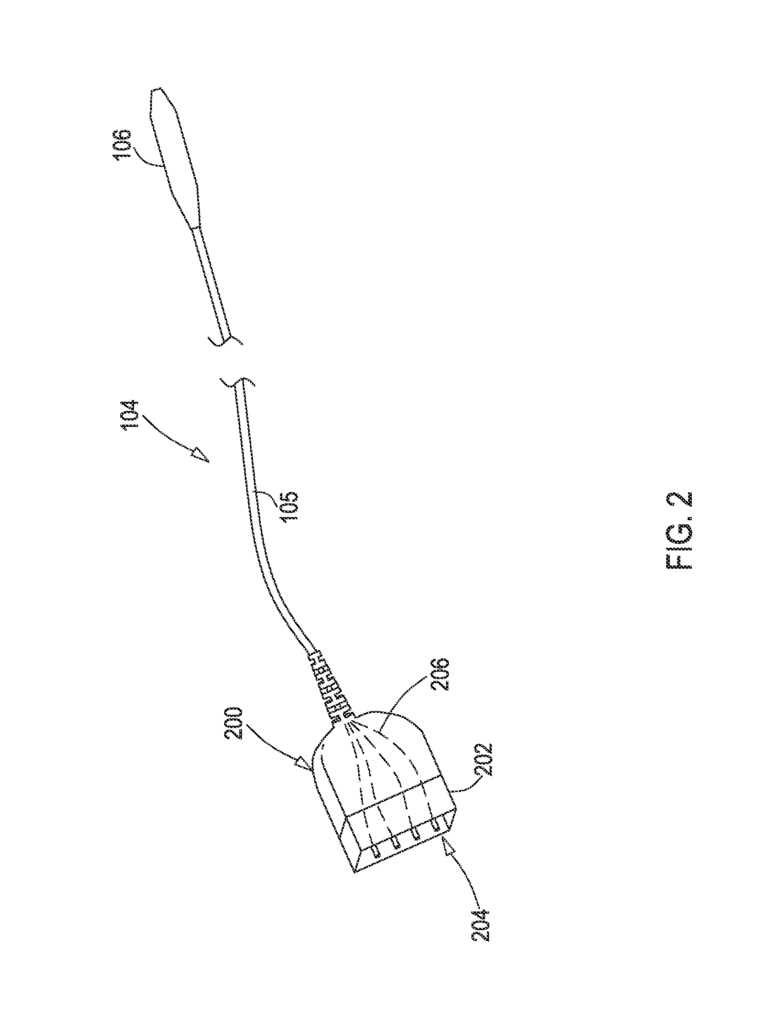
Embodiments” provide a medical extension lead that includes an electrical connector near the proximal part of the elongated tube. The elongated part of the body has a plurality conductors that are electrically connected with electrical connectors. A rigid holder is included in a distal connector assembly that is coupled to the body. Set screw block with a set-screw bore that is aligned axially to the interior of the rigid body. The rigid holder contains a plurality of electrical connectors separated by insulative spaces. The electrical connectors in the compliant holder are connected to the conductors. An overmold is then used to surround the rigid holder with the electrical connectors, spacers, and spacers.
Embodiments” provide a medical extension lead that includes an electrical connectors located near the proximal end. The elongated body includes a plurality of conductors that are electrically connected with corresponding connectors. A distal connector is attached to the elongated part and has a rigid holder that defines conductor channels. The rigid holder contains a plurality of circular electrical connectors separated by insulative spaces. The conductors run through the conductor channels, and then are connected electrically to the corresponding electrical connectors in the compliant holder. A rigid holder is surrounded by an overmold that contains the spacers, electrical connectors and a plurality of electrical connectors.
Embodiments are a method for constructing a distal connection assembly of a lead extension. The method involves separating electrical conductors with a compliant carrier, then loading the compliant carriers and electrical conductors in a rigid holder. The method also involves bonding conductors that are part of an elongated wire to electrical conductors.
Embodiments” provide a method for constructing a distal connection assembly of a lead extension. The method involves interleaving electrical conductors with individual insulative spaces in a rigid holder. The method also involves bonding conductors that are routed from an elongated cord to the electrical wires.
DESCRIPTION DU DRAWINGS
FIG. “FIG.
FIG. “FIG.
FIG. “FIG.
FIG. “FIG. 3.
FIG. “FIG.
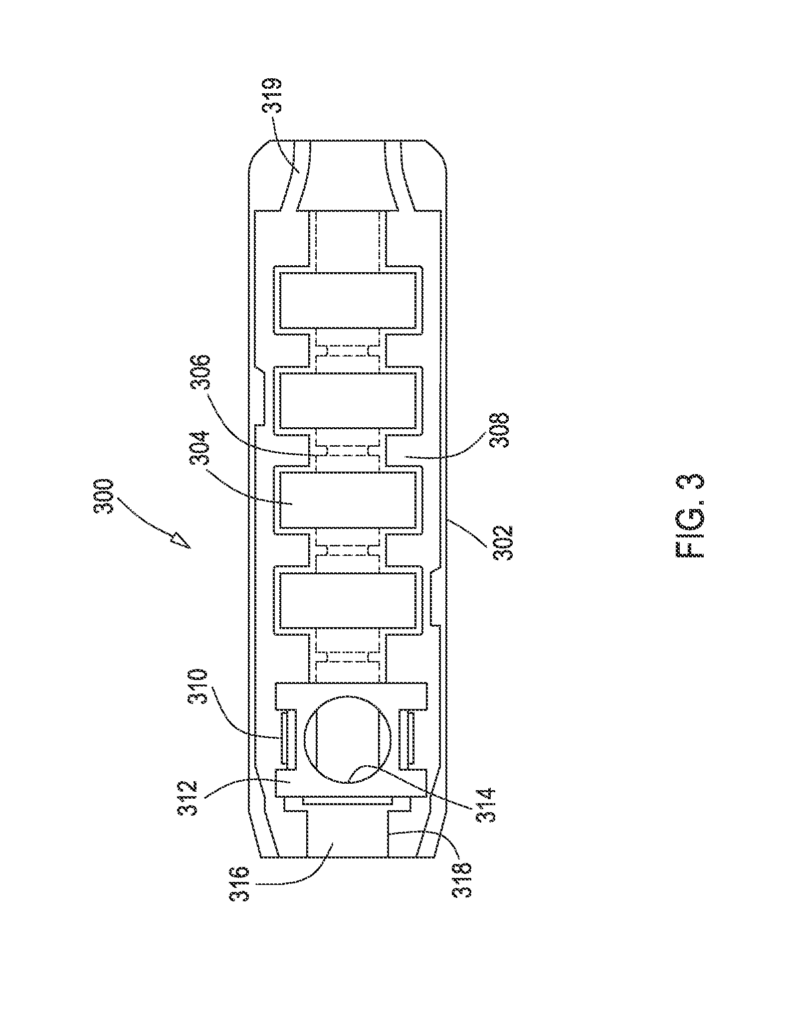
FIG. “FIG.
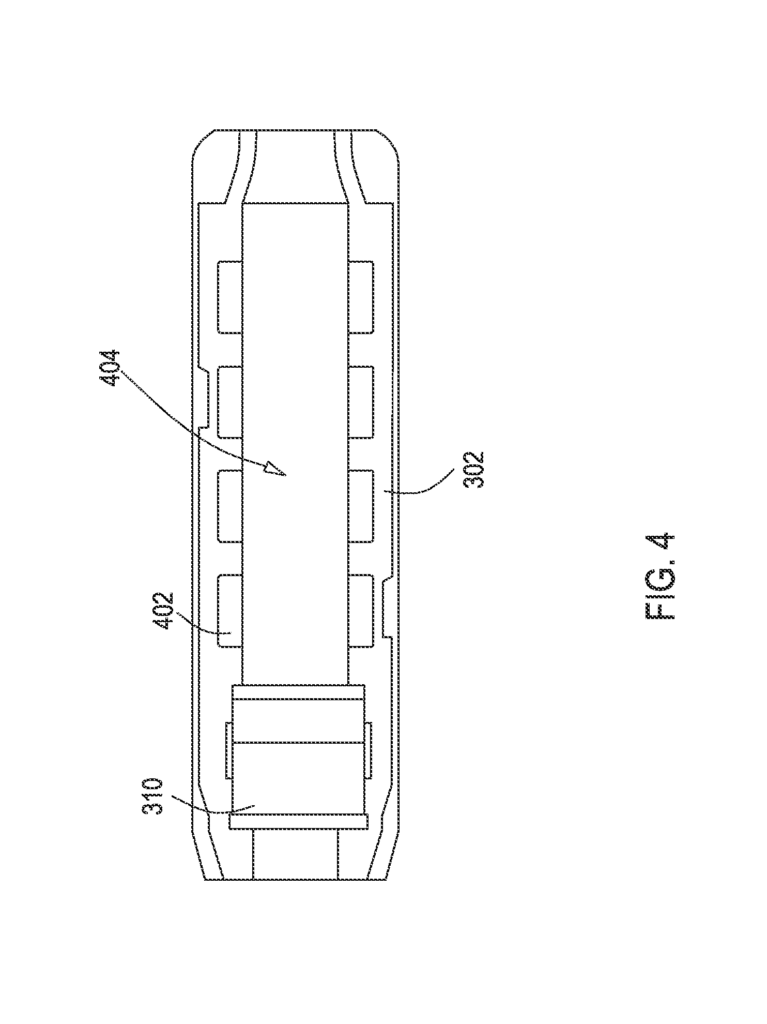
Click here to view the patent on Google Patents.
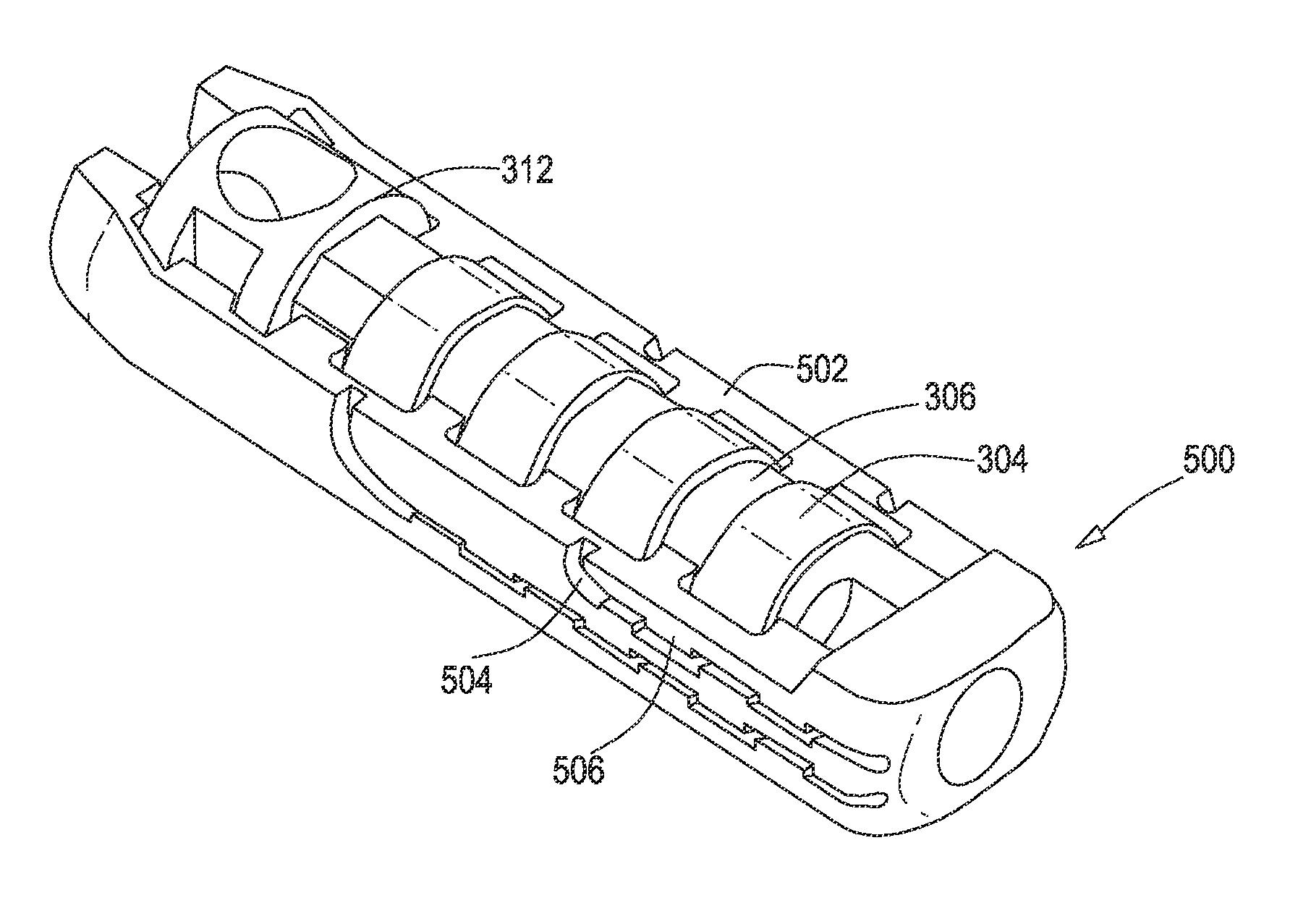
Leave a Reply